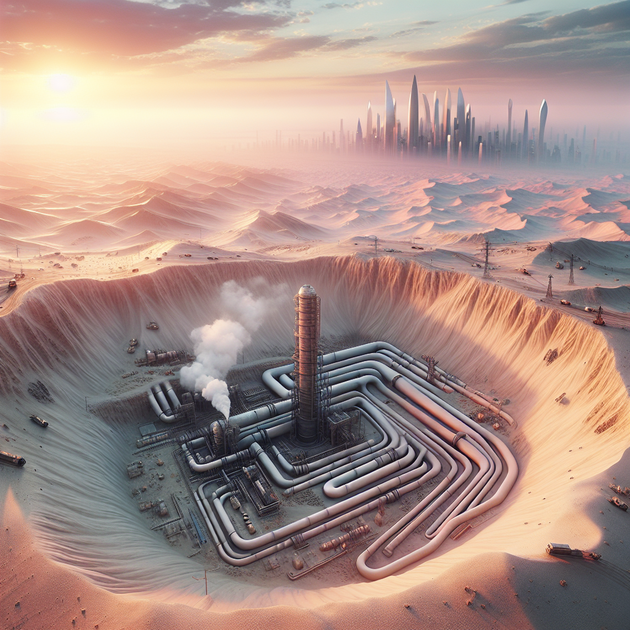Have you ever wondered if there’s a cleaner way to run air conditioners in the desert without relying on endless sunshine or gusty winds? Well, scientists are looking underneath our feet for an answer—literally. Geothermal energy, that steady heat source from deep inside the Earth, is catching attention in Saudi Arabia as a potential game-changer for powering everything from cooling systems to water plants. Some experts even think it could beat solar and wind in certain situations!
Why Consider Geothermal Energy in Saudi Arabia?
When you picture renewable energy in Saudi Arabia, you probably imagine massive rows of solar panels soaking up the desert sun or towering wind turbines spinning along the coast. But there’s another player quietly waiting its turn—geothermal energy.
Here’s why it matters:
– **Constant Supply:** Unlike sunshine or wind, which can be unpredictable, geothermal heat is always available—day or night.
– **Low Land Footprint:** Geothermal plants need less space than sprawling solar farms.
– **Minimal Visual Impact:** No huge panels or spinning blades disrupting landscapes.
– **Great for Cooling:** The consistent heat can actually help run efficient cooling systems—a huge plus in scorching climates like Saudi Arabia.
– **Ideal for Desalination:** Turning salty seawater into fresh water takes lots of reliable power; geothermal fits the bill.
It turns out that beneath parts of the Kingdom lies hot rock that could be tapped to generate electricity or directly power things like air conditioning and water purification. This might sound futuristic—but it’s already happening in places like Iceland and Kenya.
How Does Geothermal Stack Up Against Solar and Wind?
Solar and wind have gotten plenty of attention (and investment) across the Middle East. But they’re not perfect everywhere or all the time.
Let’s break down how geothermal compares:
- Reliability: Sun goes down at night; winds come and go. Geothermal runs 24/7.
- Scale: Solar works best on wide-open land; wind needs breezy locations. Geothermal can fit where underground heat is close to the surface.
- Maintenance: Moving parts on turbines need regular care; solar panels get dusty fast. Geothermal systems are mostly hidden underground.
- Environmental Impact: No emissions once running—and no worrying about sandstorms coating your panels.
Of course, not every spot is perfect for drilling deep wells. But where conditions are right (as researchers believe in parts of western Saudi Arabia), it could be a cost-effective way to boost green power without needing endless acres of land.
Clever Uses: Cooling Homes & Making Fresh Water
Here’s where things get really interesting—using geothermal not just for electricity but as a direct source for two huge needs: staying cool and getting fresh water.
– **Cooling:** Instead of fighting outdoor heat with traditional ACs powered by fossil fuels or variable renewables, buildings could use ground-source systems powered by steady geothermal warmth.
– **Desalination:** Turning seawater into drinking water is essential but usually very power-hungry work. If that process is driven by round-the-clock geothermal heat instead of oil or gas, it cuts costs—and carbon emissions.
And since these processes often need reliable baseline power (not just when the sun shines), geothermal starts looking pretty appealing.
Anecdote: A Glimpse into Saudi Research
A friend who works at a university research center outside Jeddah told me about their first experiments with small-scale geothermal units. “At first,” he said, “we thought nothing would compare to sunlight here.” But after running trials—even during dust storms that knocked out local solar—they found their test system kept humming along without interruption. “It made us realize there’s real potential under our feet,” he said with a grin.
The Road Ahead—and Your Thoughts
Saudi Arabia has ambitious goals for clean power—and while nobody expects oil to disappear overnight, diversifying with solutions like geothermal makes sense. There will be challenges (like drilling tech and upfront costs), but with constant demand for cooling and fresh water in one of the hottest places on Earth, tapping into Earth’s own heat could help keep things running smoothly no matter what the weather does above ground.
What do you think? Could geothermal become a key part of the Kingdom’s green future—or will sun and wind remain king? Drop your thoughts below!

Leave a Reply